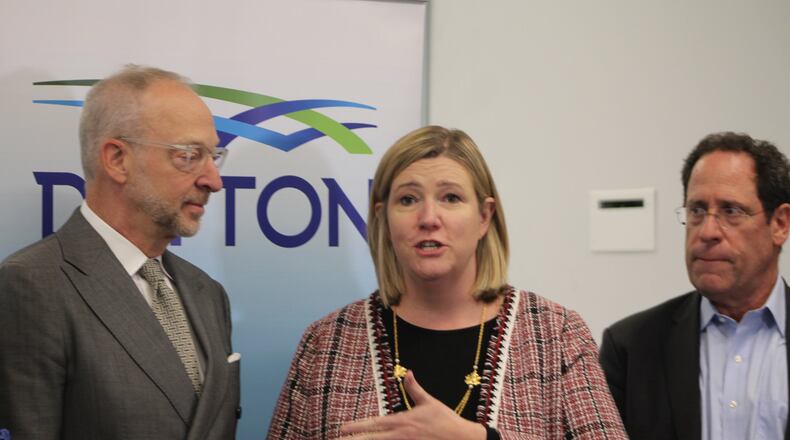The American Rescue Plan allocation is the largest grant in the city’s history, and more funding could be headed to the region if President Joe Biden’s other proposed spending packages are approved.
“This is an exciting yet a terrifying opportunity, and we have to get this right ... so that 10 years from now both the organization and the community are still benefitting from this investment,” Dayton City Manager Shelley Dickstein said about the rescue plan funds.
Dayton is the smallest U.S. city to be chosen as a stimulus command center, which will be 18-month partnerships involving the U.S. Conference of Mayors, Accelerator for America and Drexel University’s Nowak Metro Finance Lab.
The other cities selected are Los Angeles; Philadelphia; St. Louis; Louisville, Kentucky; and Birmingham, Alabama.
Stimulus command centers will have task forces with leaders from the public, private and civic sectors who will help plan, prioritize and coordinate federal relief and recovery investments, the city said.
“It’s putting thoughtful leadership around this conversation,” Dickstein said.
Dayton this week approved a framework for how it wants to spend its American Rescue Plan money, which outlined criteria for how proposed projects will be evaluated, as well as the main focus areas.
Federal funds from many different programs and agencies are flowing to communities like Dayton, and command centers can identify local projects and uses to match to federal funding sources, said Bruce Katz, director of the Nowak Metro Finance Lab.
“That’s what a command center can do ― it can understand the money that’s flowing, prioritize locally and then literally begin to draw down or deploy federal resources towards locally-driven purposes,” he said.
Federal investments work best when locally organized, “amplified” and braided and blended together with local actions, according to a January blog post Katz co-authored.
A major focus will be on leveraging federal dollars with private capital, officials said.
Katz told this newspaper that command centers will organize people and efforts across multiple sectors, agencies, programs and stakeholders to align priorities and resources.
“We think 18 months is the right phase to get a system in place so that these federal investments are in the service of local priorities ― but also that they are maximized,” Katz said.
The Nowak lab and Accelerator for America will offer guidance to cities and work to quickly identify and share innovative practices that other communities can adopt, Katz said.
“Dayton is really in the lead, with a few other cities, of organizing for success,” Katz said.
In addition to helping the city coordinate its American Rescue Plan funds, the stimulus command center will be highly beneficial if President Biden’s infrastructure and jobs package and childcare and education plan are approved, which could send more federal money to the region, said Dickstein.
Dayton has until the end of 2024 to spend its rescue plan funding. The city expects to receive the second half of its funds next year.
Other local communities also receiving rescue plan funding include Fairborn ($6.8 million); Kettering ($13.8 million); and Springfield ($44.2 million), according to the U.S. Treasury.
About the Author



